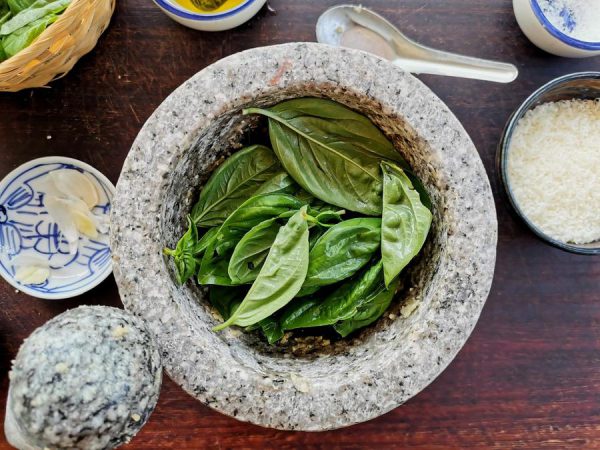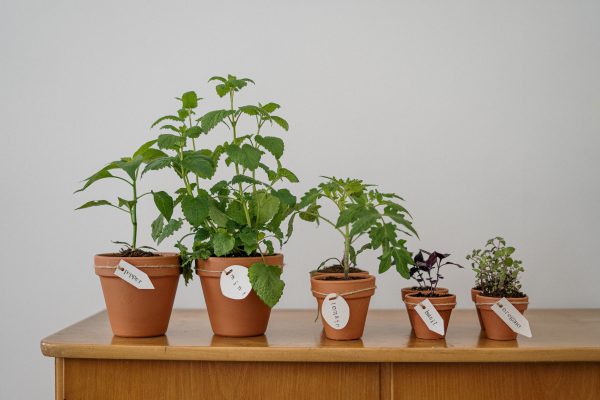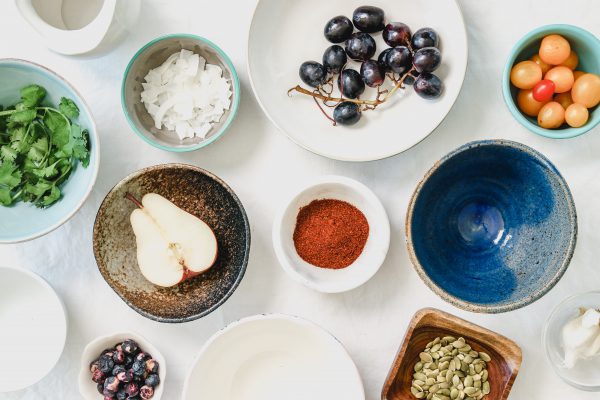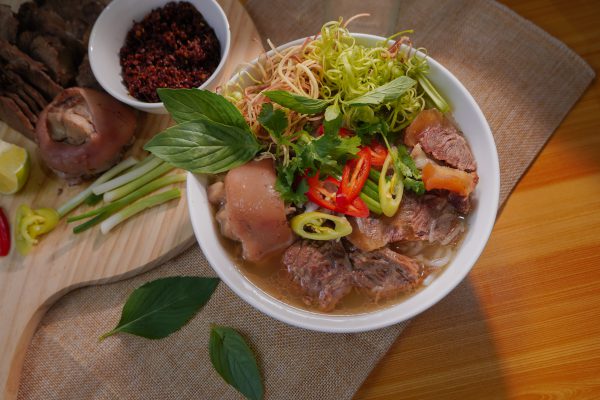Last Updated on May 27, 2022
Let’s talk soy sauce. This versatile, and nowadays mega-popular condiment has been made in East Asian countries for centuries, where it’s an inseparable part of the cuisine. It’s at the heart of “umami”, also known as savoriness, the fifth basic taste naturally found in meats and fermented foods.
Although we all love the umami it adds to our beef, chicken, or veggies, it can sometimes be so overwhelming to pick the right variety of this awesome ingredient from that long aisle of soy sauce brands that you might find yourself just picking up the closest one to you. After all, isn’t soy sauce just soy sauce? Not quite — there’s actually a science to soy sauce, as there are a ton of varieties with subtle and not-so-subtle differences. Hopefully, after reading this article, you’ll know which bottle to grab and how to make the best of it.
What Is Soy Sauce?
Soy sauce, shoyu in Japanese, jiangyou in Chinese, and soya sauce in British English, is a fermented condiment and the most preferred sauce for both cooked and uncooked dishes in Eastern and South-Eastern Asia. Thanks to its distinctive dense umami flavor, it has become a staple in Western markets too.
Authentic soy sauce is traditionally made by brewing and fermenting soybeans with wheat, which creates a distinct flavor profile that’s intense in umami and salt. Modern-day techniques used in the production of soy sauce have also evolved, which has resulted in more consistent and better-flavored soy sauces in recent decades.
Production Methods of Soy Sauce
There are a lot of factors in the fermentation process such as timing, heat, and the ratio of the ingredients that determine the taste, color, and texture of the end product. It’s possible to find chemically enhanced soy sauces, but authentic soy sauce is naturally fermented.
In general, soy sauce is fermented salty soybean juice, with or without the help of wheat. The traditional method is to let the soybeans ferment for up to 6 months, but with the help of advancing chemistry, some companies speed up this process.
The production process can vary between different types of soy sauce, and this is something we’ll explore in more depth in the sections below.
The Origin of Soy Sauce
Soy sauce is thought to have originated in China and spread through East Asian cultures and cuisines throughout the centuries. The traditional technique is thousands of years old. The essential ingredients are as simple as soybeans, wheat, water, sea salt, and yeast but the final product is not so simple because a good soy sauce requires proper fermentation and the ingredients and technique vary by region. Countries like Japan, Thailand, the Philippines, Korea, Indonesia, and many others have all adopted the flavorful condiment over time and adapted it to the nuances of their own cuisine.
The differences in fermentation processes and ingredients have resulted in a great variety and a lot of nuance in the flavors of different soy sauces. That’s why there’s a virtual smorgasbord of soy sauces out there, in almost every corner of the world, so it’s hard to generalize the taste of the condiment — it really depends on its origin.
For example, some will tell you Chinese soy sauce is sweeter than the Japanese variety, while others will swear it’s the opposite. Regardless of anecdotal differences, both countries have so many different types of soy that you can’t get away with such a simple comparison.
The Authentic Soy Sauce
When you go to the grocery store, you can find many different types of soy sauce, from very cheap ones that usually are chemically enhanced (made with hydrolyzed soy proteins instead of natural fermentation) or authentic ones that are produced and aged properly. Just like balsamic vinegar or wine, there are some specifics to the production process of soy sauce that determine its quality and authenticity.
What Are the Types of Soy Sauce?
Even though many different cultures have incorporated soy sauce into their way of cooking, the prominent producers in the global market are mainly Chinese and Japanese.
Chinese vs Japanese Soy Sauce
In general, Chinese soy sauces have a higher ratio of soybeans to wheat (around 75:25) while Japanese soy sauces use an equal ratio (50:50). Plus, Chinese producers usually use wheat flour while Japanese producers use roasted wheat.
Both Chinese and Japanese have dark and light soy sauces, but a Chinese light soy sauce is quite different from the Japanese light soy sauce in terms of texture and aroma. In fact, Chinese light soy sauce resembles Japanese dark soy sauce more than the light version as it’s typically used while cooking.
Let’s Get Into the Nitty-Gritty
First of all, there are too many kinds of soy sauces for us to discuss here. But we picked the most popular and the ones you’re most likely to need to know about, which are:
- Chinese dark soy sauce (lǎo chōu)
- Chinese light soy sauce (sheng chōu)
- Japanese dark soy sauce (koikuchi shoyu)
- Japanese light soy sauce (usukuchi shoyu)
- Japanese light soy sauce (shiro shoyu)
- Japanese tamari (tamari shoyu)
- Japanese double fermented soy sauce (saishikomi shoyu)
- Non-fermented soy sauce
Chinese Soy Sauces
Chinese soy sauces can be classified into two main categories: dark soy sauce and light soy sauce.
Both dark and light Chinese soy sauces are originally produced using a technique called high salt liquid-state fermentation, which is the traditional technique that has been used for centuries in China. When you get a tablespoon of this soy sauce, you can imagine a person seasoning their food with the same sauce two thousand years ago.
The soy sauce produced using this method contains the least amount of additives to no additives at all, which are ingredients added in various steps of the production to help fermentation or maintain freshness after bottling the soy sauce. The soy sauce ages for around 180 days and the final product has sweeter undertones.
There’s also a second technique used in the production of Chinese say sauce called low salt solid-state fermentation. In this process, the soybeans and wheat grains are defatted and the mix is aged much shorter, around 15 days. Because this method is cheaper and faster, it has practically dominated the Chinese soy sauce market, even though it compromises the flavor quality of the product and gives it burnt undertones.
Chinese Light Soy Sauce (Sheng Chōu)
Both light and dark soy sauces start in the same fermenting tub. When the process is completed, the first batch is taken out. This is the light Chinese soy sauce. Just like with extra virgin olive oil, light soy sauce is the first product after the process is completed, thus it’s of higher quality.
Because it doesn’t sit in the fermenting tub for long, light soy sauce is lighter in color, saltier, less viscous, and richer in umami flavor.
In Chinese cuisine, the most common varieties of soy sauces are light ones. You can think of it as the regular soy sauce. It’s also called light or thin soy sauce, but you shouldn’t confuse this term with strength in terms of sodium because light (not lite) soy sauces contain more sodium than dark soy sauces.
Light soy sauce is a multi-purpose soy sauce because it doesn’t dominate the dish’s taste when you cook with it. You can also use it to marinate, make stir-fries, steamed chicken, fish, meat, or vegetables, and dipping sauces. You can use a drizzle of light soy sauce for many dishes you’d otherwise season with salt.
If a Chinese recipe includes regular soy sauce, what you need is light soy sauce or shēng chōu. If the bottle of soy sauce doesn’t specify dark or light, you can be sure that it’s light soy sauce because the default soy sauce in Chinese cuisine is light.
There are 3 aspects of light soy sauce you should consider when adding it to your food — color, saltiness, and richness. Sometimes you don’t want to darken the color of your dish, sometimes you want more salt, or you want the sauce to be more prominent in the flavor profile of the dish. All of this plays a role in the type of soy sauce you pick. Overall, you can use Chinese light soy sauce as a dipping sauce, in your stir-fries, and as seasoning over a cooked meal or on the side.
Our pick: Koon Chun thin soy sauce
Chinese Dark Soy Sauce (Lǎo Chōu)
After the light soy sauce is retrieved, the remaining batch is left in the fermenting tub to continue to ferment a little longer. This results in thicker and darker soy sauce. Plus, some producers might mix their products with caramel or sugar syrup in this stage of fermentation. This is not a strictly bad thing, but it does change the taste of authentic soy sauce with some sugary tones.
Most Chinese recipes don’t call for dark soy sauce as much as light soy sauce for cooking unless the aim is to darken the color of the dish, for example, in recipes such as teriyaki chicken, a dish known for its brownish color.
Because it’s fermented longer (and sometimes dulcified), dark soy sauce is usually more piquant than its light counterpart. For this reason, you typically don’t need a lot to get the result you’re looking for.
Because dark soy sauce is pungent in terms of flavor and darker in color, it can give your dish that glazed look, and it’s great to use for braising, marinating, or cooking hearty stews. Plus, it gives the noodles that appetizing caramel brown color. However, it’s usually too intense for dipping. You can get away with using a bit more with dark soy sauce because it’s the less salty variety, but if you try to do the same with light soy sauce, you might turn your dish as salty as seawater.
Our pick: Lee Kum Kee Premium Dark Soy Sauce
Mushroom Flavored Soy Sauce (Mó Gū Lǎo Chōu)
The mushroom flavor pairs well with soy sauce, as it deepens its umami. The mushrooms in question are typically dried shiitake mushrooms but different producers might use different types. Mushroom soy sauces are almost always dark soy sauces.
Like the regular dark soy sauce, you can use mushroom flavored soy sauce for braising, marinating, stir-frying, or glazing. You can think of it as a more potent substitute for regular dark soy sauce, with extra umami and touches of earthiness.
Our pick: Lee Kum Kee Mushroom Flavored Dark Soy Sauce
Japanese Soy Sauces
Even though the Chinese were the ones to invent soy sauce, Japan has the most comprehensive varieties. Unlike the Chinese, the Japanese don’t distinguish between soy sauces as light and dark. The lingo is set that way in the international market, but in Japan, dark soy sauce, koikuchi shoyu, means regular soy sauce, and light soy sauce, usukuchi shoyu translates to light-colored or white soy sauce.
Most of the soy sauce produced in Japan uses a technique called honjozo. The wheat grains are roasted, the soybeans are steamed, and everything is mixed together with koji mold, making up the mixture that is later fermented. Depending on the type of soy sauce, the treatment of ingredients changes, and other ingredients are added, such as rice and mushrooms. Then the mixture is left to ferment for about 6 months.
Japanese Dark Soy Sauce (Koikuchi Shoyu)
In Japan, dark soy sauce is typically made using an equal amount of soybeans and wheat. The end product has a rich flavor and is brown with reddish hints. The Japanese use dark soy sauce as their general-purpose soy sauce, so if a Japanese recipe calls for soy sauce and doesn’t specify the type, you can assume it’s koikuchi shoyu.
In Japan, especially in the northern regions, it’s common to see chefs using dark soy sauce for almost everything, from marinading to glazing or dipping. Apart from its darker color, this type of soy sauce is saltier than light soy sauce and has a more intense flavor.
Our pick: Yamasa Naturally Brewed Soy Sauce
Japanese Light Soy Sauce (Usukuchi Shoyu)
In Japan, light soy sauce is made using a very small amount of soybeans. The main substance that makes up the sauce is wheat. Lİke the Chinese light soy sauce, the fermentation process is cut short in the case of usukuchi shoyu. In order to stop fermentation, more salt is added to the mixture. This produces a light color, like a pale golden color, a mellow fragrance, and delicious umami with a lot of salt.
In Japan, usukuchi shoyu is used with udon noodle soups, simmered dishes such as nimono, which is a type of vegetable stew, chawanmushi, the traditional Japanese egg custard or nabemono, the Japanese hot pot. But it takes up only around 10% of total soy sauce consumption in Japan.
Our pick: Kikkoman Light Soy Sauce
Japanese Tamari (Tamari Shoyu)
Tamari is a Japanese type of soy sauce that has become popular with the increasing demand for gluten-free products. It solely consists of fermented soybeans and omits any kind of grains. This makes it a thick gluten-free soy sauce with a distinctive flavor. Tamari contains less sodium and is mellower than regular soy sauces. If you’re looking for a gluten-free diet, you can use tamari in exchange for soy sauce but, if not, Tamari has its own place in Japanese recipes.
Thanks to its consistent and balanced flavor, tamari makes a great dipping sauce. In the case of sushi, some say it’s even better than regular soy sauce because it’s subtler and doesn’t dominate the other flavors.
Our pick: San-J Tamari Premium Soy Sauce
Japanese Double Fermented Soy Sauce (Saishikomi Shoyu)
Saishikomi shoyu is a special kind of soy sauce. It starts with equal amounts of soybeans and wheat but instead of salty water to dilute it down, regular Japanese soy sauce is added to the mixture. The result is much darker soy sauce with a stronger flavor rich with umami.
Because the production of saishikomi shoyu is much more expensive than other types of soy sauce, double fermented — or double brewed — soy sauce is generally used only with raw fish or on top of tofu.
Our pick: Fueki Saishikomi Shoyu
Non-Fermented Soy Sauce
Before we finish off our guide to soy sauce, we couldn’t help but include non-fermented soy sauce. You might also encounter these products as non-brewed soy sauce or chemical soy sauces. Note that this doesn’t mean that naturally, fermented soy sauces aren’t chemical, but that these kinds of soy sauces are made by acid hydrolysis.
Thanks to increasingly industrializing production methods, new soy sauce alternatives designed to supply cheap substitutes for traditional soy sauce are popping up more and more on the market. Genuine, top-quality soy sauces are always made through the process of natural fermentation. They contain lots of natural umami and natural flavor. But non-fermented soy sauces don’t contain these types of flavors so they’re enhanced with caramel syrup or other aroma enhancers. Sometimes they’re mixed with genuine soy sauces and that’s how you obtain semi-chemical soy sauce.
According to Keshun Liu, the author of Soybeans as Functional Foods and Ingredients, the production process of non-fermented soy sauce causes the emergence of undesired components that taste bad. Consequently, they need to be suppressed by other flavor-enhancing ingredients. The final product has a completely different amino acid profile than traditional soy sauce, and it’s not hard to tell the difference by tasting it.
To avoid these kinds of soy sauces, look for an indication of natural fermentation or brewing on the bottle. If the ingredients are more complicated than regular soy, wheat, water, and salt, you are most likely holding a bottle of non-fermented soy sauce.
How to Store Soy Sauce
Like vinegar, soy sauce was probably invented with a happy accident and stuck around for thousands of years because it’s a natural preservative. But like olive oil, once you open the bottle the soy sauce starts to oxidate and the quality of soy sauce degrades over time. So it’s a good idea to use your soy sauces when they are fresh and get new bottles as you run out.
However, if you really need to store them, you don’t need to sweat it because thanks to the high sodium content soy sauces have, they don’t carry the risk of getting spoiled. Just keep the bottle in a cool, dark place –— just like your fridge — and make sure you close the lid tightly.
Yay for the Extra Umami!
Soy sauce is one of the oldest food items around. First invented by the Chinese and then loved by the whole of East Asia, followed by Europe and the rest of the world, the condiment has a huge history in lots of places around the world. That’s precisely why it’s really hard to generalize it. In this article, we talked about the main Chinese and Japanese types of soy sauces, but there are many different types, like the Indonesian sweet soy sauce, kecap manis, or Korean soup soy sauce, guk-ganjang.
Most recipes don’t tell you what specific brand or even type of soy sauce they’re using, and you might be used to grabbing whatever soy sauce you have in your kitchen for the dish you’re preparing. But, as we illustrated, there are subtle and prominent differences between each type, based on its origin. For example, the Chinese use light soy sauce as regular soy sauce while in Japanese cuisine, dark soy sauce is the regular all-purpose soy sauce. So, if the recipe doesn’t specify which type of soy sauce it calls for, you now know how to choose it depending on the origin of the recipe.

















